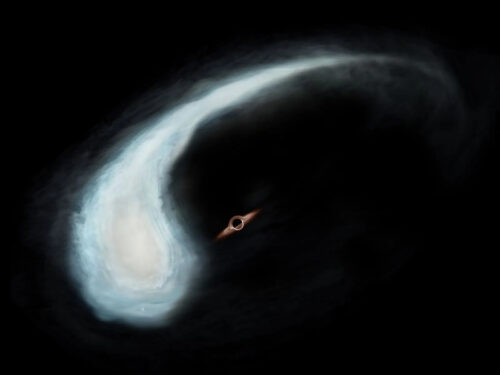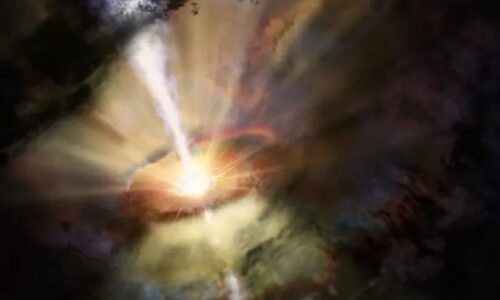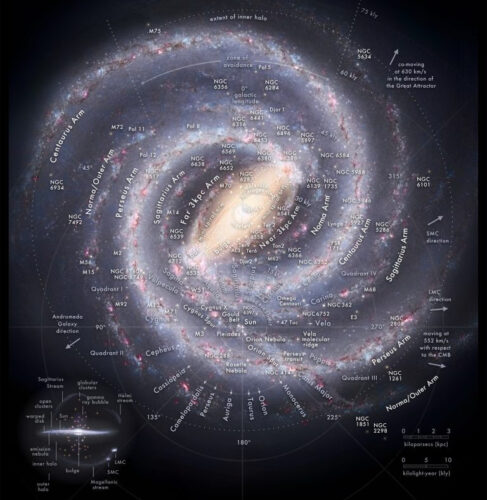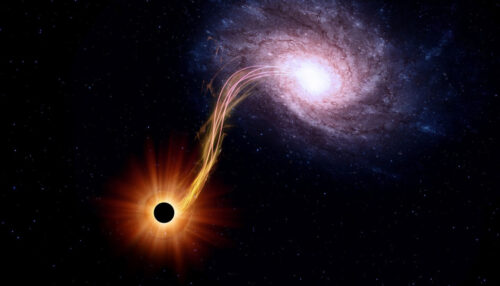
During the 1930s, astrophysicists proposed the existence of massive stars that collapse, leaving behind remnants characterized by infinite mass and density.
These remnants, known as black holes, gained their name due to their ability to trap everything, including light.
In recent research, a team of Japanese scientists made an intriguing discovery by identifying an unusual gas cloud shaped like a tadpole orbiting a black hole in the Sagittarius constellation.
Led by Miyuki Kaneko from Keio University, the research team collaborated with astrophysicists and engineers from various institutions to study this peculiar gas cloud.

Utilizing data from telescopes, they observed the cloud’s distinct head-tail structure, position, and velocity, leading them to conclude that the most plausible explanation was a black hole.
Furthermore, they estimated its mass to be approximately one million times that of our Sun, classifying it as an intermediate-mass black hole (IMBH).
The presence of an IMBH raises intriguing questions, such as the possibility of it merging with the supermassive black hole Sgr A* located in the Galactic Bulge.
Such an event would cause the black hole at the center of the Milky Way to become up to 20% more massive and generate a significant release of gravitational waves (GWs) that observatories could detect and study.

To further investigate, the team plans to employ the Atacama Large Millimeter/submillimeter Array (ALMA) to search for additional evidence of a black hole at the gravitational center of the tadpole’s orbit.
These investigations hold the potential for significant discoveries and insights into the nature of black holes.
Understanding the dynamics and interactions between black holes of different sizes and their surrounding environments can provide valuable information about the evolution and structure of galaxies.
The study of black holes continues to advance with technological advancements, pushing the boundaries of our knowledge about these enigmatic cosmic entities.

In conclusion, the discovery of a spinning gas cloud resembling a tadpole orbiting a black hole highlights the ongoing efforts to explore and understand these captivating astronomical phenomena.
Through meticulous research and collaboration, scientists are uncovering new insights into the properties and behaviors of black holes, shedding light on the mysteries of the universe.
